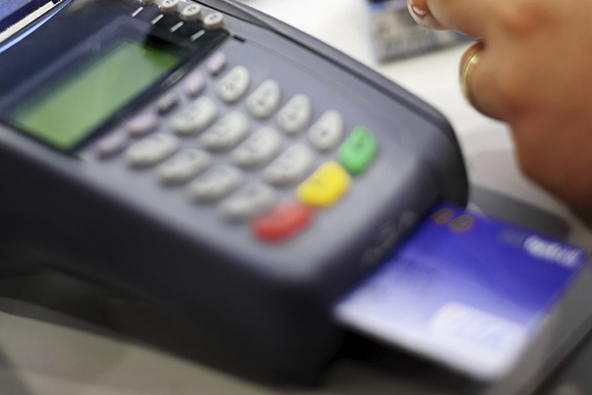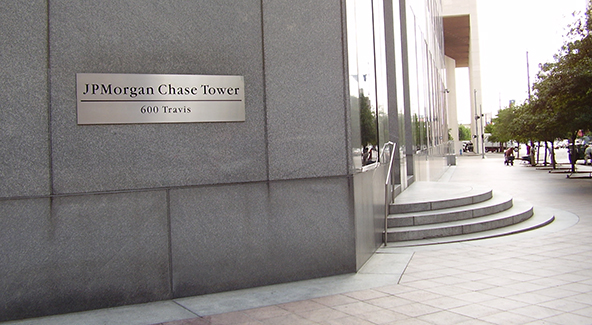Credit Card Processing Floor Limit

Floor limit (sometimes called “credit floor”) is the amount above which credit card transactions must be authorized before being processed. The floor limit can vary from business to business and is specified in the merchant processing agreement. All card transactions conducted in a non-face-to-face environment have a zero floor limit, which means that all of them must be authorized, regardless of the amount. Non-face-to-face transactions include e-commerce and MO / TO (mail order and telephone order) payments and refunds, but exclude transactions at cardholder-activated terminals (CATs), like the ones at gas or train stations, which are considered face-to-face, even though the merchant is not physically present to accept the card.
For example, if a store’s floor limit is $25.00, every purchase of $24.99 or less would not have to be authorized, while transactions of $25.00 or more would require authorization. Authorization is the process by which a card issuer approves or declines a transaction. In a face-to-face environment, the authorization occurs automatically when the cardholder swipes her card through the merchant’s point-of-sale (POS) terminal. In a non-face-to-face setting, the authorization occurs when the card account’s information is submitted online or over the phone. In both instances, once the card information is provided, it is routed to the card issuer through Visa’s or MasterCard’s network and then the card issuer’s response is routed back through the same channel, approving or declining the transaction.
Floor Limit — an Overview
Floor limits carried a much greater importance in the past when the merchant had to call for an authorization on any payment amount that was over a predetermined level. Back then payment card processing involved taking a physical imprint of the card and the authorization process required a personal review, making the process both time consuming and expensive.
Today merchants can benefit from electronic authorization systems that payment processors provide at a very low cost. Once a payment is authorized, the merchant has an additional, and powerful, assurance against fraud. Still, even today, the credit floor limit concept comes into play occasionally.
For example, if unable to connect to the payment processor’s authorization system, a merchant will not be able to obtain an electronic authorization and will have no recourse against fraudulent activity or a customer dispute that will potentially lead to a chargeback. Yet, if the transaction amount is less than the credit floor limit, no authorization is required by the payment processor.
If, however, the amount is over the floor limit, the merchant must authorize the transaction and can do this by making a telephone call to the payment processor and obtaining a “voice authorization.” In this case the merchant will be well advised to also take the card’s imprint and place it on the sales receipt. Voice authorizations should be used only as a last resort, as they bypass the processing bank’s systems and cannot be used as supporting evidence in chargeback re-presentments. You should avoid key-entering voice-authorized transactions.
How to Handle Authorizations Below the Floor Limit
For each transaction that is below your floor limit, you have the following options:
- For magnetic-stripe card transactions, request authorization.
- For chip-card (EMV) transactions, either obtain offline approval or request online authorization.
- Do not request an authorization, but compare the card number to the current Card Recovery Bulletin (CRB), if required (check with your processor.
If you are presented with a card that is listed on the CRB (an international list of lost, stolen, counterfeit and other cards that card issuers have listed for pick-up), you are required to:
- Not complete the transaction.
- Retain the card, if possible by reasonable, peaceful means. Do not put yourself at risk.
- Call your voice authorization center, state that the card number is on the bulletin, provide the account number and ask for instructions.
If the card number is not on the CRB and the transaction amount is below your floor limit, you are not required to obtain an online authorization and you can proceed with the transaction. There are, however, some exceptions to this rule.
You are required to obtain an online authorization for manual cash, Visa Electron cards, expired cards or unattended terminal transactions and for fallback transactions (when the chip card cannot read at a chip terminal) or if the chip card requests the terminal to proceed with an online authorization.
The chip embedded on the card contains issuer-defined parameters that guide the acceptance procedure in a full chip transaction. The chip can be programmed to request that a chip-enabled terminal proceed with an online authorization or request that the transaction be authorized offline by the chip.
Image credit: Equipment Outreach.



I think this post needs updating, though it is probably still relevant for the most part.